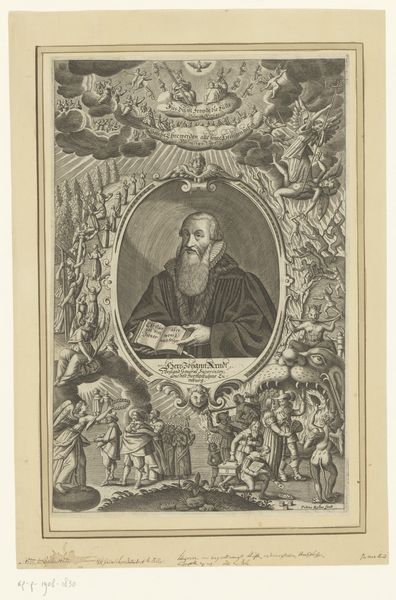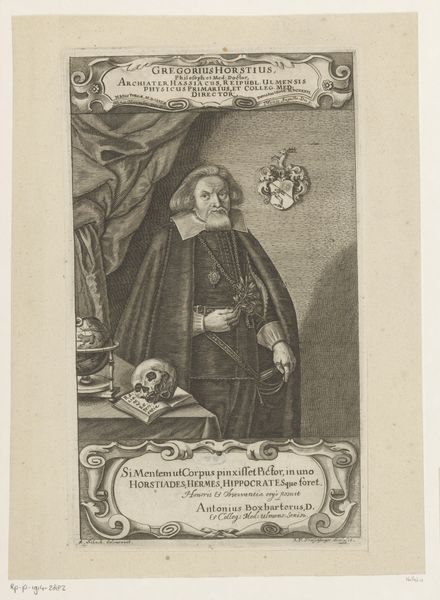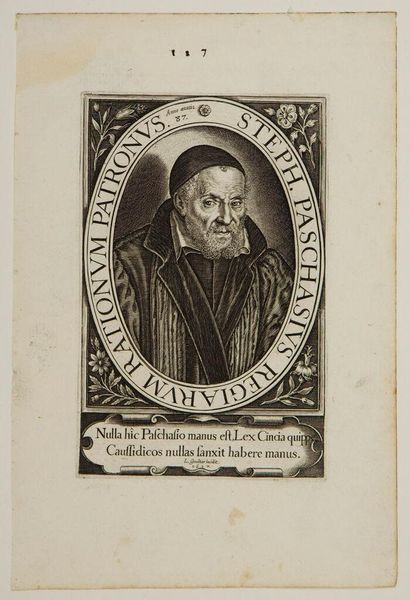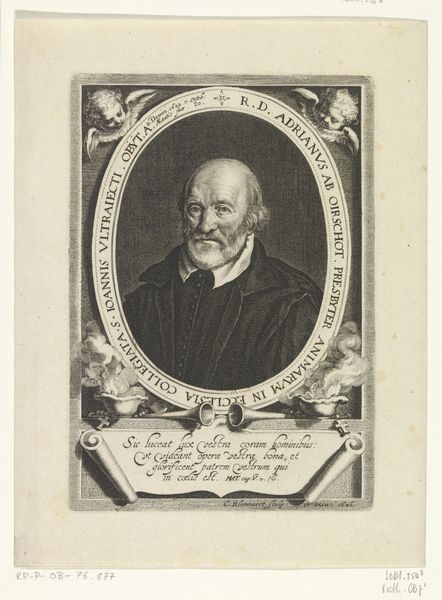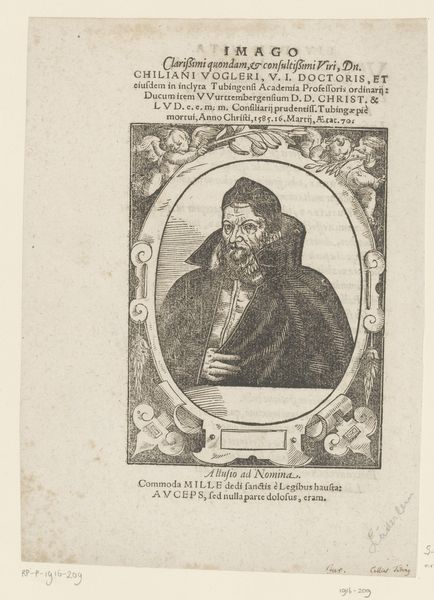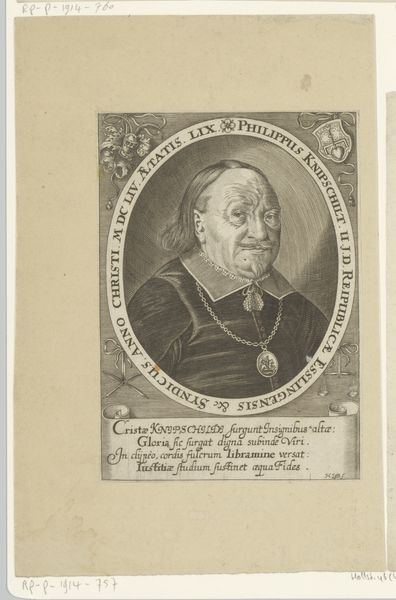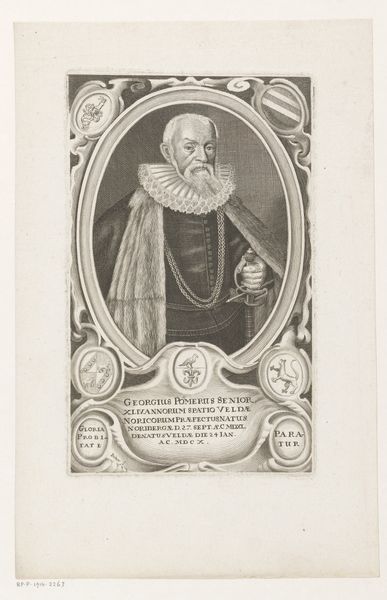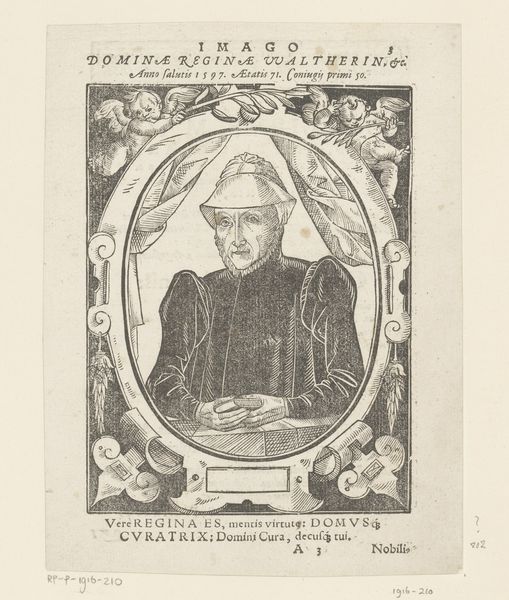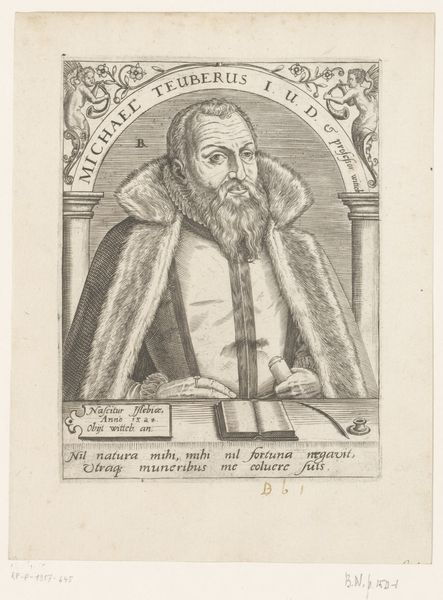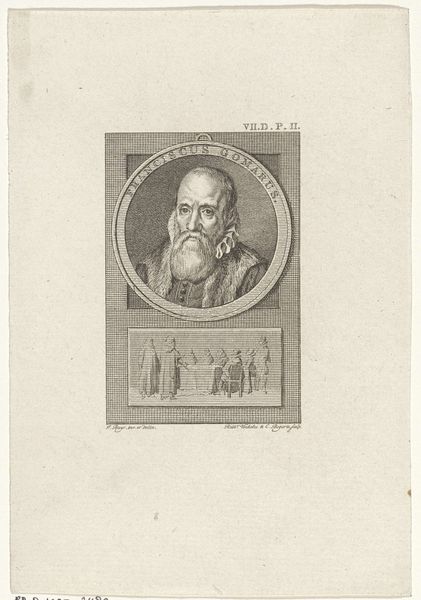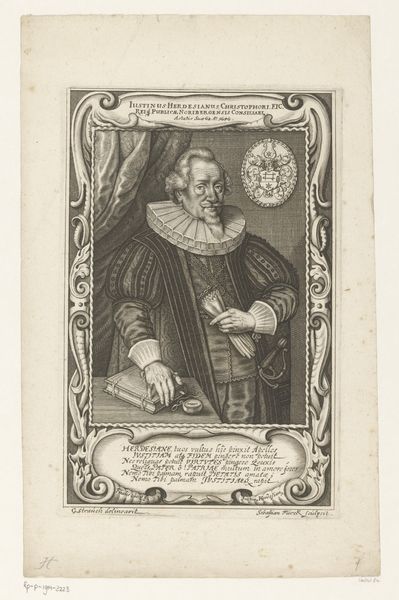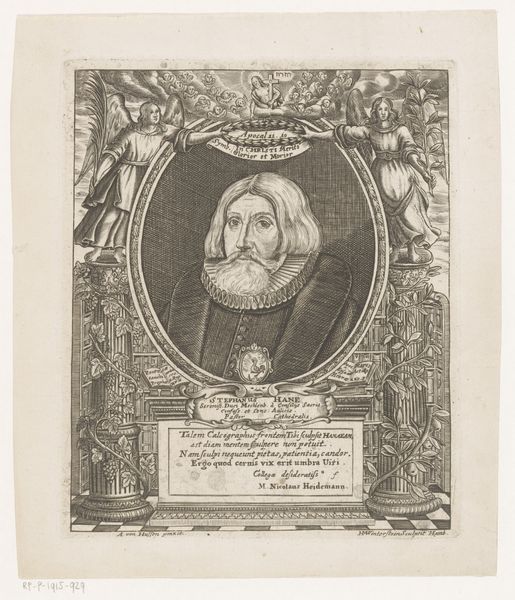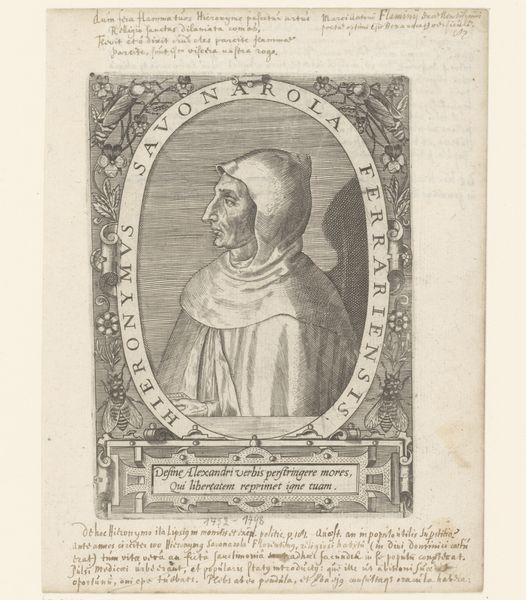
print, engraving
#
portrait
#
allegory
#
baroque
# print
#
old engraving style
#
geometric
#
history-painting
#
engraving
Dimensions: height 148 mm, width 90 mm
Copyright: Rijks Museum: Open Domain
Editor: This is "Portret van Gregor Strigenitz" by Moritz Bodenehr, an engraving from between 1675 and 1748, housed in the Rijksmuseum. The stark contrast between the portrait above and the allegorical scene below is striking. What do you see as the core elements of this print? Curator: Let's focus on the formal structure first. The composition is bisected, horizontally delineating two distinct visual fields. Note the geometric precision of the upper portrait, contained within a perfect oval, contrasted against the landscape setting below. The lines in the upper part are sharp and controlled, indicating an intention to accurately and truthfully represent the features of Strigenitz, while the lines of the allegory below are softer. This change could indicate it has another purpose, like inviting the viewer into philosophical musings. Editor: So the structure itself tells a story? What is it suggesting here? Curator: The formal arrangement prompts a certain reading. The subject, framed and elevated, suggests a social standing worthy of documentation, while the open and earthly realm hints at other, maybe moral, aspirations. How do the textural differences play a part in the overall impact? Editor: I see it. The varying line weights and densities create depth, especially in the drapery and Strigenitz's beard, lending a tangible quality. Is it possible to decode further meaning simply through line quality? Curator: Absolutely. Notice how the more expressive lines create a softer effect in the allegorical portion, in the wings of the angel for example. One could examine the semiotics of each and posit what statements Bodenehr intended. Editor: Interesting! I’ve always looked for outside context, but it seems the piece provides its own framework for interpretation. Curator: Precisely. Close formal analysis allows for a direct engagement with the artwork’s intrinsic qualities, shedding light on intent, whether consciously planted by the artist, or appearing incidentally.
Comments
No comments
Be the first to comment and join the conversation on the ultimate creative platform.
